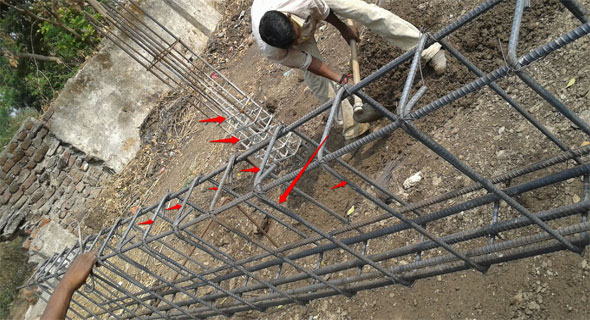How to measure rolling margin of reinforced steel
- Concrete Cost Estimator
- Concrete Continuous Footing
- Landscape Bidding and Estimating
- Construction Cost Estimating
- Concrete and steel cost estimation
- Construction Cost Estimate Breakdown
- Construction Estimating Worksheet
- Home Construction Cost Estimate
- Estimate Pricing Sheet
- Sheet for General Contractor
- Construction Cost Estimate
- Labor Materials Cost Estimator
- Masonry Estimating Sheet
- Sheet for Building Contractor
- Construction Schedule Bar chart
- General Cost Estimator Sheet
- General Construction Estimate
- Building and Road Estimating Sheet
- Detailed expense estimates
- Door and Window Takeoff Sheet
- General Construction Cost Estimating Sheet

Rolling margin refers to the ratio of deviation in sectional weight of reinforcement steel permitted according to IS codes. Reinforcement steel is extruded from a mould that is formed with a specific size e.g. 8mm Dia.
When the mould is completely new, the sectional weight of 8mm steel extruded through mould is perfect as per IS standard.
Mould is slightly expanded after specific period of time or after definite quantity of production is acquired from a particular mould. Now equivalent 8mm dia bars extruded from the similar mould will contain more weight per Metre say 0.400Kg per Metre rather than 0.395 as per IS. So, more mass per Metre/Length is necessary for equivalent length.
Given below, the variation in weight as per IS code-1786 for various dia:-
8mm to 10mm +- 7%
12mm to 16mm +- 5%.
20mm and above +- 3%.
Rolling Margin is measured as follow :-
Total Weight of Bars (Dia wise) / Total Running Metre of Bars = Actual Sectional Weight of bars.
Also Read: How to arrange reinforced steel bars in a beam on jobsite
Compare sectional weight with Standard IS Weight.
Weight as per IS Standard = Dia x Dia / 162.
Rolling margin means the differentiation among the theoretical and actual weight of steel. It occurs due to the die that is applied for casting of rebars. Over a period of time, the shape of die alters and consequently the diameter of the steel bar is also modified which leads to create variation in unit weight of steel.
The size of the die is retained small and accordingly rolling margin is negative in the preliminary phase of production, there after it is comparatively close to theoretical weight and then the size of die is raised that leads to rolling margin on positive side.
If the steel is brought from same supplier over a period of time, the rolling margin is rectified and there will be no loss.

- Application of concrete calculator
- Roofing Calculator can streamline the roof estimating process
- House construction cost calculator
- Engineering column design excel spreadsheet
- Material Estimating Sheet with Excel
- Materials List and Cost Estimate Worksheet
- Concrete Slab Estimating Calculator Sheet
- Common types of foundations for buildings
- Online calculation of construction materials
- Estimating with Excel for the Small Contractor
- Concrete Beam Design Spreadsheet
- Virtual Construction Management app for construction
- Autodesk’s Project Skyscraper
- Reed Construction’s Reed Insight
- Manage your construction project documentation
- Costimator, the popular cost estimating software
- On Center Software for construction professionals
- Free Construction Estimating Software
- Plumbing Calc Pro
- Cost Estimate Worksheet
- HVAC Piping Quantity Takeoff Worksheet
- Construction Estimating Software Sheet
- Estimate Cost Templates
- Construction Punch List
- Construction cost estimating template consisting estimating basic
- Gantt Chart Template for Excel
- Download Civil Engineering Spreadsheets with Verification
- The Building Advisor Estimating and Budgeting Worksheet
- Spreadsheet for design of concrete bridge
- Construction Estimating Software Free








